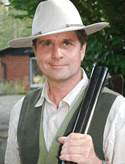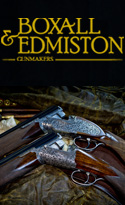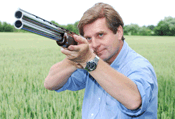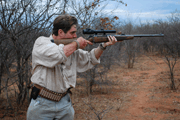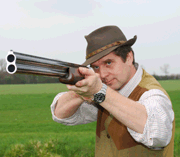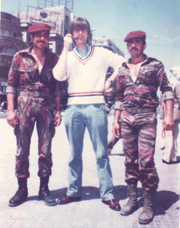Cartridges for Clay Shooting
Mike uses Express High Velocity 24g and 28g when gun testing - 24g routinely, 28g for semis
Cartridges for training
I favour lightly loaded cartridges for instruction and training (I use them for just about everything). My favourite budget load is the excellent Express High Velocity. The Hull Chevron is another good choice and very soft recoiling.
Basic 24 gram (7/8th ounce) 12 bore loads will do far more than most shots realise. Shot size, might be 7 1/2, 8, or 9 - frankly it does not make much difference in the context of basic or intermediate level skeet or sporting or game shooting (stick to 7 1/2 or 8 for trap though). For 20 bores, I would choose 7/8th or 13/16th loads for beginners. Subsonic 20bores (as made by Hull) make an excellent training load for young shots.
Cartridges for clayshooting
My advice for novice to average clay shots is not to waste money on expensive cartridges. All the major manufacturers offer excellent 24 and 28 gram economy loads that will do the job very adequately. Look for clean burning powder, well formed cases with strongly attached rims, acceptable recoil, and, of course, good patterns from your gun/choke combination (i.e. even patterns without excessive gaps, excessive clustering, balling, or abnormal central concentration.) My favourite budget clay loads include Express’s High Velocity (a super load for 2 ½ chambered guns and anyone looking for quick but low recoiling load), the Express Procomp (a good, reasonably priced all-rounder for 70mm guns), the well priced Victory Sporter shell, Hull's Chevron High Velocity(they also do a ‘Low Recoil’ Chevron useful for beginners), Eley's First, Gamebore’s popular Clear Winner and Winchester Trap 100s.
Better clay shots may benefit from premium quality cartridge (but these will only be of significant advantage to top competitors, most notably, those involved in the international trap disciplines and FITASC sporting). Hard shot, with a high antimony content reduces pellet deformation and helps to produce even patterns, similarly, plated shot, as used in the most expensive cartridges, increases pellet hardness too, and appears to reduce central concentration. Express Excel Olympian (as used by Olympic Gold Medallist, Richard Faulds) and Supreme, Gamebore White Gold and White Gold F2, Hull Pro One (another personal favourite) and Sovereign, and Eley VIPs are all really excellent.
Sporting
For sporting shooting (except for the competitors in the top 10% of AA) I advise standardisation on a single pellet size - 7 1/2 (2.3mm)or 8 (2.2mm). Attempting to match cartridges to targets, like changing chokes from stand to stand, only serves to distract. For those who insist on changing cartridges, 9(2mm) shot may, generally, be selected for close targets and medium range targets where the belly is presented to the shooter (but avoid it for hard composition targets such as rabbits or on very windy days because it is prone to drift), for, everything else, and especially edge on targets at range, use 7 1/2 shot.
Skeet
Skeet shots do not have as many choices to make, nearly all U.K. shots use 9 shot in a 24 or 28 gramme load (Olympic Skeet shots may only use the former). I can see no advantage to using smaller or larger shot, or larger payloads, even if the rules permit it. Velocity, within reasonable limits, is not a great concern for skeet shooting, comfort is of paramount importance.
Trap
As for trap shots, some prefer to use 8 shot in the first barrel, but use a larger size 7 1/2 or 7 (2.4mm) in the second barrel, because the bigger pellet retains kinetic energy better at range. Again, I tend to think this is a distraction. My own preference would be for 7 1/2 shot in both barrels in a fast 24 gram load. Although cartridge quality and velocity are more important considerations at trap than any other discipline, one must have confidence in the cartridge above all else. Trap shooting is a game of confidence, lack of it will destroy your timing.


